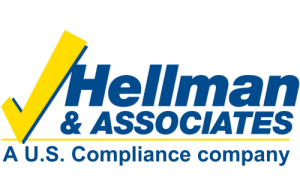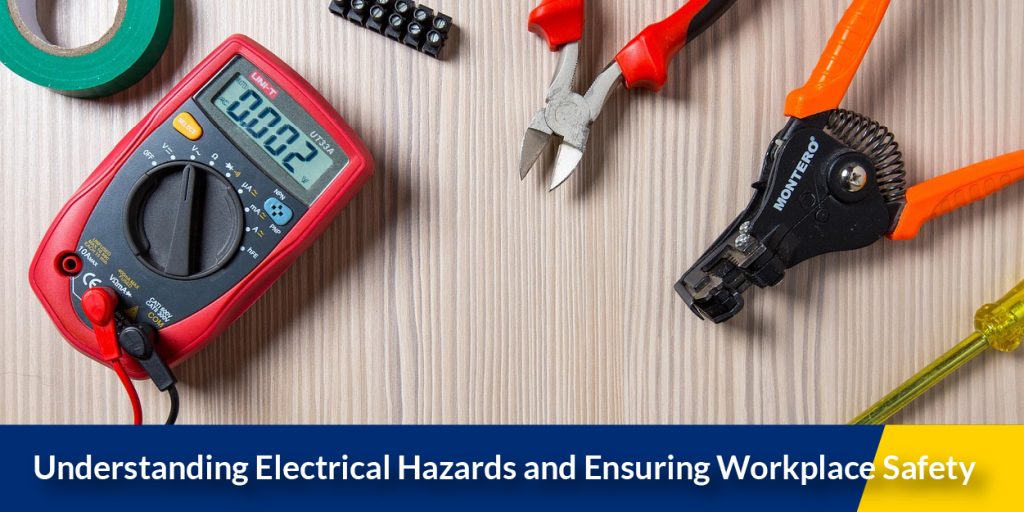Understanding Electrical Hazards and Ensuring Workplace Safety
Electricity is an essential part of daily life, powering everything from small household appliances to large industrial machinery. However, when handled improperly, it poses significant risks, including burns, shocks, and even electrocution. Whether at home or in the workplace, understanding and following basic electrical safety protocols is crucial to preventing accidents. This blog post explores key electrical safety measures, focusing on breaker panels, ground fault circuit interrupters (GFCIs), and extension cords.
Breaker Panels: Keeping Your Electrical System in Check
Breaker panels serve as the central hub of your electrical system, housing the circuit breakers that protect circuits from overloads and faults. Proper maintenance and accessibility of these panels are vital for electrical safety.
- Accessibility is Key: Ensure that breaker panels are always easily accessible. Avoid storing items directly in front of the panel and maintain at least three feet of clearance. In emergencies, quick access to the panel can be life-saving.
- Cover Integrity: The panel should always have a securely closed cover. It should not be locked unless maintenance or repair work is underway as part of a lockout-tagout (LOTO) procedure.
- Clear Identification: Each circuit breaker should be labeled with a directory index. This ensures that users can quickly identify the appropriate breaker in case of maintenance or troubleshooting.
- No Missing Breakers: Any missing breakers or openings in the breaker faceplate can expose workers to the “hot” electrical bus at the back of the panel, increasing the risk of electrocution.
- No Securing of Breakers in “On” Position: Never tape or otherwise secure breakers in the “closed” (on) position. Each breaker is designed to handle a maximum amperage and is a safety mechanism that trips when overloaded.
- Proper De-Energization: If maintenance work is required, do not tape breakers in the “off” position as a means of de-energizing. Instead, use proper lockout-tagout (LOTO) procedures to ensure safety.
- Left-Hand Rule for Safety: When opening panels or throwing disconnect switches, use the left-hand rule. This means positioning your body to the side rather than directly in front of the panel. In the event of an arc flash, this practice minimizes the risk of severe injuries.
Recognizing GFCI Hazards and Taking Action
Ground Fault Circuit Interrupters (GFCIs) are designed to protect against electric shocks by shutting off power when they detect a fault. However, frequent tripping of a GFCI should be seen as a warning sign rather than a mere inconvenience.
- Pay Attention to Tripped GFCIs: If a GFCI keeps tripping when using a power tool or appliance, do not simply reset it and continue working. This is an indication of an underlying issue that must be assessed by a qualified electrician.
- Investigate Tripped Breakers and Blown Fuses: These occurrences suggest excessive current flow due to malfunctioning equipment or a short circuit. Ignoring these signs can lead to more serious electrical failures.
- Monitor for Heat and Odors: If a power tool, appliance, wire, or connection feels unusually warm, this could indicate excessive current flow. Additionally, a burning odor may signal overheating insulation. Both situations require immediate evaluation and resolution.
- GFCI Protection Near Water: Any electrical equipment used near water or in outdoor settings should always be plugged into a GFCI-protected outlet. Water increases the risk of electrical shocks, and GFCIs significantly reduce this danger.
Safe Use of Extension Cords
Extension cords provide temporary power solutions but can pose significant hazards if misused. Following best practices ensures safety and prevents potential fire or shock risks.
- Regular Inspections: Frequently check extension cords for signs of wear, damage, or deterioration. If a cord is frayed or damaged, replace it immediately rather than attempting to repair it.
- Proper Placement: Never run extension cords through doorways, windows, walls, ceilings, or floors. Pinched or covered cords can overheat and lead to fire hazards.
- Temporary Use Only: Extension cords are intended for short-term use (less than 90 days). If permanent wiring is needed, consult an electrician to install a proper outlet.
- Use Only Three-Prong Cords: A three-prong cord includes a grounding pin, which is essential for safety. Never use a cord with a missing ground pin, as this can lead to severe electrical hazards.
- Avoid Daisy-Chaining: Do not interconnect multiple extension cords or power strips. This practice, known as “daisy chaining,” increases the risk of overheating, circuit overload, and potential fire hazards.
Conclusion: Prioritizing Electrical Safety
Electrical hazards pose serious risks, but following these essential safety practices can significantly reduce accidents and injuries. By maintaining proper breaker panel protocols, recognizing and addressing GFCI warnings, and using extension cords safely, individuals can create a safer working and living environment.
Regular inspections, proper equipment usage, and adherence to safety guidelines are essential in preventing electrical accidents. When in doubt, always consult a qualified electrician to assess and address any potential electrical issues. Prioritizing electrical safety not only protects individuals but also ensures the longevity and efficiency of electrical systems.

